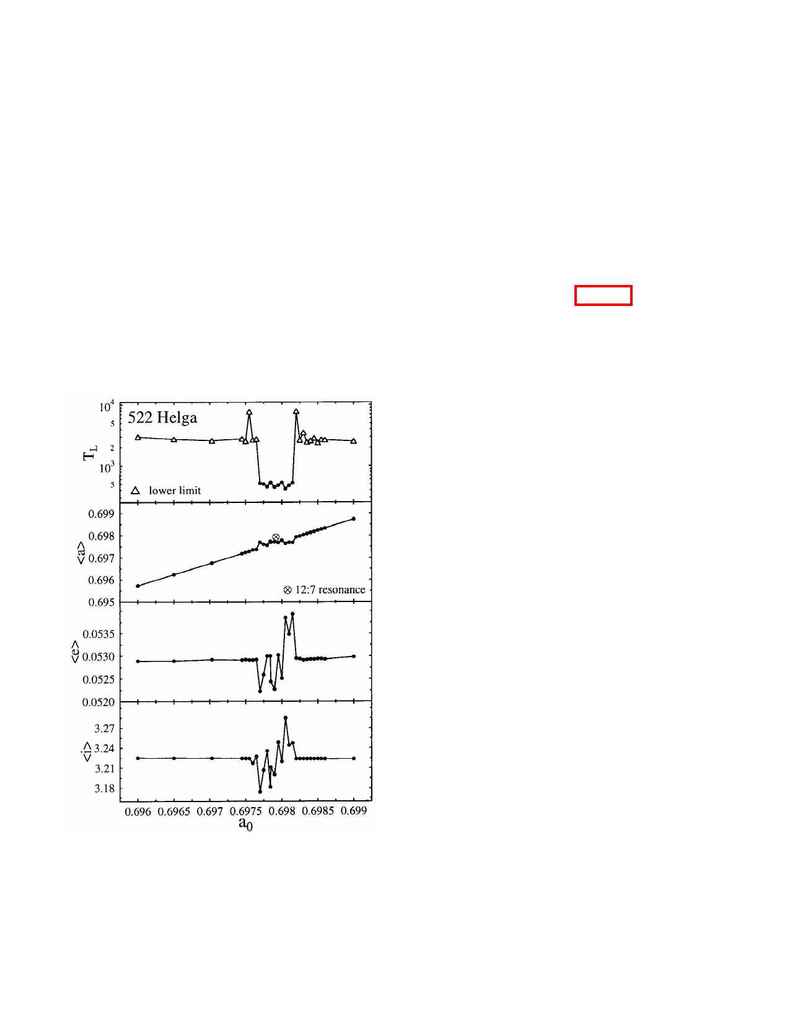
correct, we would expect that an original popu-
lation of asteroids would be largely depleted by
now, leaving a few members in the large-T
e
tail
as present-day survivors. We have thus quanti-
tatively determined the short-T
L
boundary for
this type of object. If this boundary were
inconsistent with the age of the solar system,
we would be faced with a quandary. However,
we argue that this is not the case.
Recently, Milani and Nobili (1992) reported
an integration of just one outer-belt asteroid,
(522) Helga. They found a Lyapunov time of
roughly T
L
=580 T
J
(6900 yr). Unaware of the
actual significance of this value, they claimed
discovery of (522) Helga as the first known
example of a new class of dynamical behavior
for which they contrived the misleading and ill-
considered label "stable chaos." They go on to
claim that T
L
in this case must therefore be
"meaningless." However, using our initial con-
ditions we find T
L
>2915 T
J
, corresponding to
only 1.3
from T
SS
for T
e
. With slight changes
L
=490 T
J
, which is even
smaller than, but comparable to, Milani and
Nobili's value and corresponds to
T
e
950,000 T
J
. (The similarity of our value for
T
L
, obtained with the ERTB equations of
motion, and Milani and Nobili's value, resulting
from integration of all the planets, lends further
support for our use of the simpler ERTB prob-
lem.) Yet even this value of T
e
is only 2.7
from T
SS
. Thus we find it difficult to believe
that the longevity of (522) Helga despite an
apparently short T
L
is evidence of a new class
of objects or a new physical concept. Rather, it
is more likely that Helga is a tail member of the
distribution of residuals in T
e
about the mean
T
L
-T
e
relation eq. (1). Indeed, we conjecture
that (522) Helga is not stable, and that it will
eventually suffer a catastrophic change in its
orbit (cf. Wisdom, 1983, figs. 1 and 4). We
argue this point in more detail below.
The next to last column of Table II shows
the number of standard deviations that the age
of the solar system lies from the expected value
for T
e
as calculated from T
L
and the T
L
-T
e
rela-
tion. Of the clearly-chaotic orbits, for which
we can calculate a reliable T
e
, three asteroids
Chaotic Motion in the Outer Asteroid Belt
page 7
Figure 2.
Variation of T
L
with initial semimajor axis for
(522) Helga (top panel). Successive panels show the varia -
tion of the semimajor axis, orbital eccentricity, and orbital
inclination, averaged over the integration time of 10
5
T
J
.
